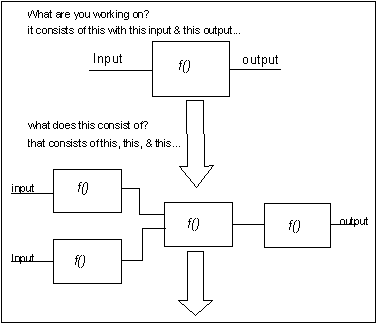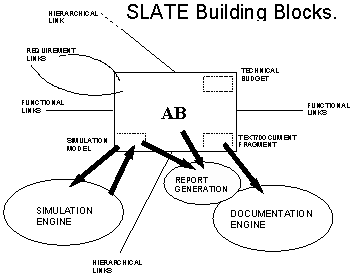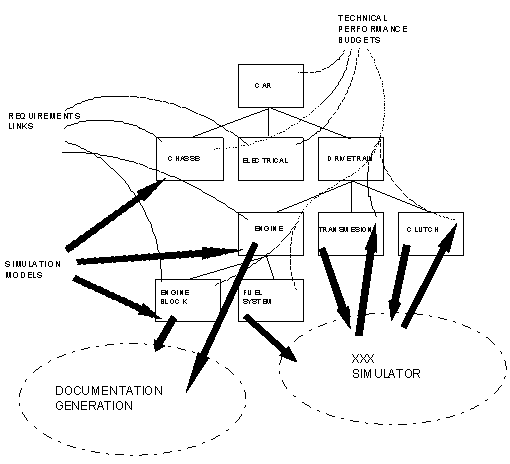
TD Technologies
2425 N. Central Expressway Suite 200
Richardson, TX 75080
Phone: (972) 669-9937
Fax: (972) 669-9938
E-mail: Sampson@tdtech.com
Abstract. Deploying ERP tools like SAP in any organization is a complex undertaking with many potential pitfalls--as evidenced by many high-profile implementation failures costing millions of dollars over original estimates. This is in part due to the fact that each ERP deployment is a unique experience with no two enterprises being exactly alike; each with their own unique financial or management processes. Similar complexity in other industries (such as complex electronic systems, aircraft design, transportation systems, environmental/regulatory compliance, pharmaceuticals, wafer fabrication plants, etc.) have spawned processes and tools to deal with this complexity--usually tagged under the heading of Systems Engineering or Systems Architecting. This paper proposes applying systems principles to the ERP implementation project backed up by tools (such as SLATE) that support a systems approach to product development improving the product in the process--after all, the product of an ERP implementation project are functioning, customer-compliant financial and management systems.
What is Systems Architecting and why is it important?
As its "architecting" name suggests, you can think of a Systems Architect much the same as a building architect, except the Systems Architect is designing products (any kind of product) rather than a building.
In essence the building architect captures the needs of the building tenants; how they are going to use it, how many people, flexibility, growth, etc. before launching into the design (customer requirements). He then considers the surrounding environment, building codes, getting people in and out, parking, aesthetics, security, plus the myriad other considerations (constraints); doing the trade-offs between various potential approaches before putting it on paper. The design is captured on paper in the form of drawings that document the results of the analysis and communicate those decisions to the builders. Systems architects capture their design trade-offs in the form of detailed design specifications that communicate their decisions to product builders/design engineers--EE’s, Software Engineers, ME’s, and other disciplines.
In the past, buildings were simple enough that a single architect could oversee the entire process. Today they work as large teams involving many different specialized disciplines (energy management, ergonomics, structures, etc.). Systems architecting also involves many different disciplines that must be balanced to build a product that meets the customers needs (manufacturing, distribution, maintenance, regulatory compliance, etc.).
As building commences, the building architect shifts roles from building designer to building project manager. They spend much of their time handling trade-offs as unforeseen problems surface (...materials delivered late that impacts installation of...). System architects also shift roles as the product goes into design. Unforeseen problems or issues surface and need to be addressed and traded at a global level throughout the life of the project.
Given their importance, we would never consider starting building construction without the architectural drawings in hand. We would never consider turning a construction crew loose on a building before the architect knows what they are building; yet that is exactly what happens many times in the product development process--software engineers writing code, electrical engineers designing circuits without the system architect telling them where they are going in the form of design specifications.
Texas Instruments (where SLATE was developed) discovered that if the system architects get behind the construction crew, you’ve lost control of the project and have the beginnings of a "runaway" project. The consequences:
A quick introduction to SLATE...
Since you can’t slow down the "construction crew," you must speed up the systems architects to keep them ahead of the designers. Nowhere is this competitive pressure felt more than in the electronics systems business, where getting to market 6 months late can erode a third of your profits. Feeling this pressure,
Texas Instruments realized the need for a computer-aided architecting tool to accelerate systems architects/engineers by:

The result was SLATE (System Level Automation Tool for Engineers). SLATE represents a "first of its kind" system-level engineering, product-oriented groupware that supports a team approach to system design including:
...the result is a Computer Aided Engineering (CAE) environment that not only captures systems, but also customer requirements, and allows those requirements to be linked to design alternatives; all of which allows a team of designers to focus on the product while avoiding the many pitfalls of getting the right product to market on time and on budget.
The SLATE building blocks (Systems Architecting "Tinker Toys") were developed by talking with systems architects and watching what they were doing. For example we discovered that they used a "language" for describing what they are building. Try this experiment for yourself. Ask any system architect what they are working on and they will grab a marker, head for the nearest white board and begin drawing boxes and arrows (although not as neatly as below)...
As a result, it became obvious to us that whatever a tool did, it needed to speak this natural language of Hierarchical Decomposition. We call these boxes that the architect uses so much, Abstraction Blocks (shortened to AB). These Abstraction Blocks (AB’s) can be hooked up hierarchically (hierarchical decomposition) and functionally (this output goes from here to this input over here). In addition, we can hook other things to them like requirements, technical budgets (power, cost, weight...), notes, simulation models, graphics,...

We built SLATE’s graphical user interface around this idea...with the architecting team using the building blocks to build and interrelate systems. The building blocks are represented graphically in SLATE’s User Interface by icons, for example:
These building blocks can be used to build systems by attaching or linking them to each other. For example a car design might consist of many of these abstract building blocks built into the structure of a car (...the car consists of an engine, transmission, passenger compartment, etc.). The parts of the car are hooked to each other such as the engine is attached to the transmission and the transmission is linked to the drive train. Requirements are used to capture customer desires (the foundation upon which the product is built and the common language used to talk to the customer) and are related to the various car components that address those requirements. Budgets are attached to the various car components to track cost, MPG, weight and other critical design parameters. Notes are also attached to car components to document decisions, concerns, and many other issues involved in getting the car to market. With the design complete, documents are generated out of this design capture effort such as maintenance manuals, user manuals, software design specifications, and others.

Using the SLATE building blocks to support ERP implementation—using SAP as an example.
As illustrated below, SLATE’s building blocks can be used to capture the necessary views of an organization from which SAP can be configured. The process is as follows (see numbered figure below):
To this point, we have been focused on the "how we are going to use SAP" or the "to be" condition. However, this is only part of the problem; getting from where we are to the "to be" is a major problem. SLATE can help in this area also.
Some of the benefits of this approach include:
…all of which creates a measurable, improveable process for accelerating SAP implementation, that creates competitive advantage for the SAP customer and consulting organization.
SLATE also has a feature called an "activator". Activators, like their biological virus counterparts, cause other processes to trigger, allowing deployment and management processes to be enforced.
For example:
Summary
ERP deployment in a complex organization is a very complex problem that requires a "systems architecting" approach to controlling ERP deployment projects. SLATE supports this systems approach by providing a set of system architecting building blocks that can be used to automate and control an ERP deployment project by:
...all of which puts you in control of the deployment effort and reduces the risk of a "runaway"; producing satisfied customers and competitive advantage in the process.
BIOGRAPHY
Mark E. Sampson works in SLATE marketing at TD Technologies’ in Dallas, Texas. He is a graduate of Brigham Young University (BSCE) and University of Southern California (MS-Systems Analysis/Management) and has over 14 years experience in applying automation tools to various engineering disciplines, including systems architecting. The large number of ERP implementation runaways lead to his investigations into applying systems practices used in other complex projects to ERP implementation. This paper is a result of his investigations. He can be reached at TD Technoloiges Dallas offices at sampson@tdtech.com or (972)669-9937.
